It can’t be easy getting 193 countries to agree on anything, let alone how to save the world. So UN secretary-general Ban Ki-moon will be a happy man as adoption of the post-2015 Sustainable Development Goals (SDGs) draws near.
All 193 UN member nations, including the UK, are expected to sign on the dotted line and pledge to achieve 17 goals (made up of 169 individual targets) at the UN headquarters this weekend.
Five years of dogged intergovernmental negotiations, public consultation and private sector feedback led up to the final draft, so there is every confidence the SDGs will be adopted.
Man on a mission: just how did Ban Ki-moon get 193 nations to agree to work together?
2010: Ban Ki-moon kicks off the debate on how the UN can work together to make the planet more sustainable after 2015. Countries agree that there need to be goals, but not on much else
June 2012: With the eyes of the world on the London Olympics, world leaders sneak off to Rio for a conference to set some ground rules on how to keep Ki-moon’s masterplan moving forward
July 2012: Ban Ki-moon keeps influential figures on side, appointing an élite panel to give him feedback. Prime minister David Cameron and Unilever CEO Paul Polman are among the 27 chosen
September 2013: The UN throws the debate wide open, and over a million members of the public get a say on the proposed goals in a huge UN survey. It’s hailed as the biggest consultation of its kind
September 2014: More debates take place at the UN. Some countries, including the UK, are unhappy at the number of goals on the table. Ban Ki-moon has his work cut out to convince them
December 2014: After four years of careful negotiations, consultations and debate, the UN secretary-general shuts himself away to write a draft copy of the 17 sustainable goals
July 2015: Against the odds, all countries agree on a final draft, and how to pay for the goals at (another) conference in Addis Ababa. But critics say there isn’t enough cash on the table
September 2015: Mission accomplished for Ban Ki-moon. Five years after the process began, it’s time for 193 world leaders to smile for the cameras in New York and sign on the dotted line
Once formalities are over, they will deliver a blueprint for sustainable international development until 2030, succeeding the Millennium Development Goals (MDGs) that expire at the end of 2015.
Far more than an agenda to alleviate poverty the goals will shape sustainable development as much here in the UK, as in developing nations tackling a far broader agenda than their predecessor. So how will the UN deliver on that blueprint? And what has it got to do with the UK fmcg industry?
The SDGs are not legally binding or backed by sanctions, so the UN will have to rely on world leaders to keep their commitment to them. Countries will be expected to shape future public policy in line with the SDG goals and report progress back to the international community at interim reviews (the period between reviews is currently undecided). Exactly how the UK government plans to play its part remains unclear. When contacted by The Grocer, the Department for Business, Innovation & Skills would only say the UK “will implement and comply with the SDGs domestically” and use a “coordinated approach”.
Malcolm Preston, global head of sustainability services at PwC, anticipates the introduction of “regulation or incentivisation” for businesses in areas where the government is most “serious” about progress. Gender equality and health are two likely targets.
Fmcg shouldn’t wait for government and instead take the lead, says Budgens retailer Andrew Thornton. “Business is the biggest force in the world that could make a positive difference,” he says. “We as business leaders have an opportunity to make a difference, and we need to because we can’t go on the way we’re going at the moment.”

Sustainable grocery
Sustainability is already high on the agenda in grocery and has been for years. The SDGs won’t mark a “radical revolution” for the sector, says Mike Barry, director of sustainable business at M&S, but “another step on the journey”. The retailer has already achieved 47 of 100 commitments on sustainability in its own Plan A. These include a 60% reduction in packaging used for home deliveries, 100% of fish sourced sustainably, and a 36% improvement in energy efficiency.
Director of Sainsbury’s brand Judith Batchelar believes the supermarket’s 20x20 sustainability plan is also “well aligned” with the SDGs, “including our environmental and sourcing commitments”.
“We believe that the business case for sustainability has never been stronger,” she adds. “We will continue to focus on our sustainability commitments and take action to support the goals.”
Why is Fairtrade demanding more?
The UN may have spent five years getting all its members agreed on 17 goals, but the Fairtrade Foundation believes this still isn’t enough. The biggest risk to the success of the SDGs, it says, is incoherent policy from all UK government departments.
Trade negotiations to date haven’t incorporated the vision of the goals, the Foundation says, and will continue to simply free up barriers to trade without consideration of the impact on poverty and climate change.
To avoid that it’s calling for the adoption of an additional five-point agenda. This includes the introduction of a formal mandate for the Department for International Development to ensure sustainable development oversight of all trade deals, says Barbara Crowther at the Fairtrade Foundation.
This would involve a formal process for assessing the likely impact on sustainability of any agreement “before those deals are signed off”, and planning in advance for those communities that may be adversely impacted by any deal.
The reform of the EU sugar market shows precisely what can happen without these checks in place, she adds. According to independent research released this month, the removal of EU beet sugar production from 2017 will leave ACP countries losing out on millions in trade. Mozambique and Swaziland alone stand to lose out by over $40m from October 2017, reducing the revenue earned from sugar exports by 5%-7%.
“New mechanisms will need to be put in place to hold governments accountable for delivering policy coherence around these SDGs, and that’s what our five-point agenda is demanding,” Crowther says.
Batchelar adds Sainsbury’s has worked on a course with the GLA to help prevent worker exploitation among vulnerable workers across its UK and global supply chain, and improved water efficiencies via a project in Kenya. Both projects are in line with the expectations of the SDGs. Pressure to invest in a broad spectrum of sustainable projects like these will only increase with adoption of the goals.
Of Ban Ki-moon’s new 17 goals, those of most relevance to the fmcg industry are those around sustainable production and consumption, climate change, and gender equality.
“It’s an incredibly ambitious and broad agenda,” says Natalie Samarasinghe, executive director of the UN Association. “But I think it’s rightly so because the MDGs were criticised for focusing only on some aspects of sustainable development.”
Fairtrade Foundation public policy manager Barbara Crowther agrees. “The whole frame has shifted,” she says. “We’ve got a much more comprehensive set of goals. That makes it much more complex, but much more relevant to a wider group of stakeholders.”
And the government will expect fmcg to assist it in achieving these aims. “There’s been recognition that countries can only do so much to deliver on such an agenda,” says Samarasinghe. “If we are going to achieve these very ambitious goals we desperately need the private sector to be committed.”
Yet only one third of companies are currently considering the impact of all relevant SDGs, according to a survey by PwC. “I suspect that if you went to a lot of businesses and mentioned the SDGs they wouldn’t know what you were talking about,” believes Preston.
That could be a costly mistake. A company that aligns its business strategy with the SDGs will be able to more easily comply with any forthcoming regulation from governments looking to achieve these international sustainable targets, Preston points out.
As a result “forward-looking” fmcg businesses shouldn’t wait for government to intervene, believes Crowther, and “should be taking a look at that agenda, assessing their current CSR strategies and thinking how we align ourselves to this”.
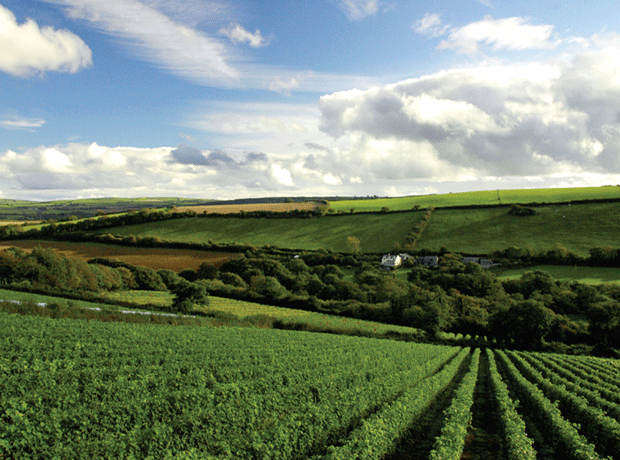
Good on eco-targets, poor on gender equality
The Fairtrade Foundation has been working with grocery brands and retailers to assess their sustainability plans against the backdrop of the SDGs to identify gaps. Many score well on eco-targets but poorly for gender equality, or rights, Crowther points out.
As well as “avoiding a burden of regulation” it makes “good business sense to act in these spaces”, says Barry. It creates a common framework for grocery to walk towards, he adds, and encourages collaboration .
“The UK retail sector has worked very hard on sustainability issues,” he adds. “But as hard as we work we recognise that after an initial 25% of improvement in any sustainable area it gets harder to do on your own. You need collective action. So businesses need to become more literate and savvy on which 10 to 15 goals they can meaningfully contribute to, and be smart in terms of who they partner with.” The CGF, IGD and BRC will all have frameworks and collaborative efforts that companies can sign up to, he adds.
How do the SDGs differ from the MDGs, and why?
Significant progress has been made towards the eight Millennium Development Goals adopted at a UN summit in 2000.
Over the past 15 years, the number of people living in extreme poverty has fallen from 47% in 1990, to 22% in 2014, while 74 countries have halved their poverty rates. On top of that, global food consumption has increased from an average of 2,655 calories per person per day, to 2,940 in 2015.
Crucially, though, the eight MDG goals were pitched as an agenda for developing countries, says Fairtrade’s Barbara Crowther. The SDGs are a different matter.
They are “applicable to anyone, anywhere in the world” says Malcolm Preston at PwC. “They have been deliberately drafted to be as applicable to an inner suburb in Indiana as a slum in India,” he adds, forcing the likes of the UK government to look closer to home.
This also means greater potential impact on the private sector, and a greater opportunity to help, with many goals shaped by business input, says Natalie Samarasinghe of the UN Association.
Whereas the MDGs were produced by “UN officials in a room” drawing up goals on the back of an envelope”, the Sustainable Development Goals have been drawn up via a much “more consultative” process, she says. “There is lots more to do with creating a positive environment for business to operate in. Business has had a lot to say.”
Fmcg must be prepared to demonstrate its progress toward the goals too, urges PwC, which could involve reporting new data on sustainability.
Data needed to measure each of the SDGs is still being thrashed out by the UN. In June 2015 experts recommended 100 stats to map progress toward the SDGs, the result of 18 months of consultation with NGOs, businesses, and statisticians. These won’t be formally adopted in time for the New York conference, though, and the UN says work is still “ongoing”. Whatever the final outcome there will “definitely” be more reporting expected from fmcg, believes Chris Brett, global head of corporate responsibility and sustainability at agribusiness Olam International. “The biggest challenge will be measuring your impact,” he adds.
Paying the bill
Finding the cash to pay for the SDGs is also a big challenge. The UN estimates it could cost $11.5tn a year, or $172.5tn over the 15-year timeframe to achieve its aims. Despite countries agreeing a financial plan at the international conference in Addis Ababa, “a lot of work still needs to be done” to source all the money needed at both a UK and international level, says Samarasinghe.
The action plan from the July 2015 meeting included a recommitment from countries to the target on aid of 0.7% of gross national income (GNI). States also pledged to collect more taxes and fight tax evasion to raise funds. Aid will be a vital factor but greater demand for the private sector to invest will be crucial, says Samarasinghe. Crowther adds that UN funding may be available for public-private partnerships launching projects to achieve the SDGs, but governments will increasingly look to business to plug the gap.
Ultimately though she hopes fmcg will see the SDGs as an opportunity, not a burden. “Those best able to articulate how they are contributing to the SDGs are going to be best placed both in terms of building public confidence and partnering with government,” she says. “Governments everywhere will be looking to the business community as partners in this effort.”
And who can blame them? Faced with the colossal challenge of saving the world in 17 steps, they’ll need all the help they can get.
Which parts of Ban Ki-moon’s masterplan does fmcg need to focus on?
GOAL 1
End poverty in all its forms everywhere
GOAL 2
End hunger, achieve food security and improved nutrition, and promote sustainable agriculture
Bits to pay attention to: The creation of “sustainable food production systems” runs through targets 2.3 to 2.5, and includes specific aims to “double the agricultural productivity” of small-scale food producers. Targets 2.b and 2.c call for a ban on “all forms of agricultural export subsidies”.
Impact on fmcg: Support for smallholders in developing markets could require factoring in of premiums to the supply chain. Improving nutrition in the UK market may also prompt firms to consider reformulation to cut sugar levels in particular. A ban on export subsidies could leave the industry “further squeezed” however by international competition, warns Jessica Burt, specialist food regulatory lawyer at national law firm Mills & Reeve.
GOAL 3
Ensure healthy lives and promote wellbeing for all, at all ages
GOAL 4
Ensure inclusive and equitable quality education and promote lifelong learning opportunities for all
GOAL 5
Achieve gender equality and empower all women and girls
Bits to pay attention to: 5.1 calls for countries to “end all forms of discrimination against all women and girls everywhere but points in particular to “equal opportunities for leadership” for women as a mechanism for achieving this, while 5.c encourages this to be backed up by “enforceable legislation” where necessary.
Impact on fmcg: The UK government has made clear its intentions to tackle gender discrimination via regulation if necessary. From 2016 new measures will require employers with 250+ staff to publish information on their gender pay gap. Adoption of SGD 5 will fuel their commitment to address this issue, and with just 8.14% of executive leadership roles filled by women in fmcg, it’s a goal that could leave the sector vulnerable. Companies may need to look again at treatment of women both here and across their global supply chain.
GOAL 6
Ensure availability and sustainable management of water and sanitation for all
Bits to pay attention to: Target 6.4 should be high on the agenda for international beverage brands with a call to “substantially increase water use efficiency across all sectors” by 2030, ensuring “sustainable withdrawals and supply of fresh water to address water scarcity”.
Impact on fmcg: A 15-year timescale will give brands a deadline to look again at the efficient use of water along their supply chain. Major brands such as Coca Cola have already taken steps to tackle this resource issue but may need to go further.
GOAL 7
Ensure access to affordable, reliable, sustainable and modern energy for all
GOAL 8
Promote sustained, inclusive and sustainable economic growth
GOAL 9
Build resilient infrastructure, promote inclusive and sustainable industrialisation, and foster innovation
GOAL 10
Reduce inequality within and among countries
GOAL 11
Make cities and human settlements inclusive, safe, resilient and sustainable
GOAL 12
Ensure sustainable consumption and production patters
Bits to pay attention to: 12.6 urges governments to “encourage” companies to “adopt sustainable practices and integrate sustainability information into their reporting cycle.” This could include food waste, which target 12.3 says must be halved by 2030 at both the retail, and the consumer level.
Impact on fmcg: Achievement of goal 12.3 alone will require “action by every nation,” according to Dr. Richard Swannell, director of sustainable food systems at Wrap, through programmes such as Refresh. This £6.6 (€9m) project involves 12 European countries and China working together to cut food waste. Such programmes are “key to forging strong European partnerships, and helping towards achieving this ambitious and important sustainable development goal,” adds Swannell.
GOAL 13
Take urgent action to combat climate change and its impacts
Bits to pay attention to: Target 13.2 calls for measures on climate change to be integrated into “national policies, strategies and planning” with a need for greater awareness. 13a specifically outlines plans to raise £64.8bn ($100bn) from “all sources” to address the needs of developing countries.
Impact on fmcg: Adoption of Goal 13 is expected to influence strongly the upcoming UN summit on climate change in December. Countries are expected to pledge “nationally determined contributions” for post-2020 action at the Paris conference, which will feed
down into domestic regulation and expectations on business.
GOAL 14
Conserve and sustainably use the oceans, seas and marine resources for sustainable development
Bits to pay attention to:Target 14.2 calls for stakeholders to “sustainably manage and protect marine and coastal ecosystems to avoid significant adverse impacts”. More specifically target 14.4 aims to “end overfishing” and “regulate harvesting” by 2020, and 14.5 calls for at least 10% of marine and costal areas to be conserved.
Impact on fmcg: Sustainably sourced seafood is of particular relevance to grocery retailers, according to Peter Andrews, sustainability policy adviser at the BRC. The retail industry hopes the SDGs will help to galvanise collaboration toward sustainable seafood, he says, building upon the organisation’s existing guidance on how to tackle illegal fishing and attempts to clarify the definition of sustainable seafood. These goals could act as impetus for retailers to cut unsustainably sourced fish from shelves.
GOAL 15
Protect, restore and promote sustainable use of terrestrial ecosystems, sustainably manage forests, and combat desertification
Bits to pay attention to: 15.2 promotes the “sustainable management of all types of forest” and demands deforestation be halted by 2020.
Impact on fmcg: The Forest Stewardship Council has called for a voluntary “chain of custody certification system”. This would track materials from forest to final product to show they originate from certified forests.
GOAL 16
Promote peaceful, and inclusive societies for sustainable development, provide access to justice for all and build effective, accountable and inclusive institutions at all levels
GOAL 17
Strengthen the means of implementation and revitalise the global partnership for sustainable development







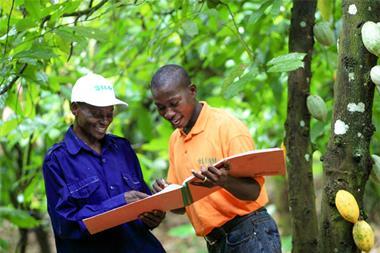
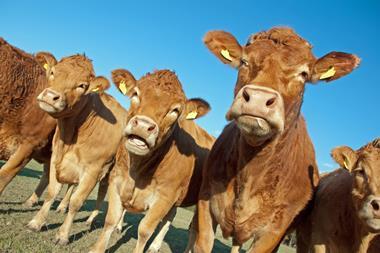
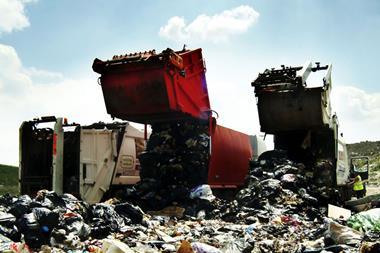
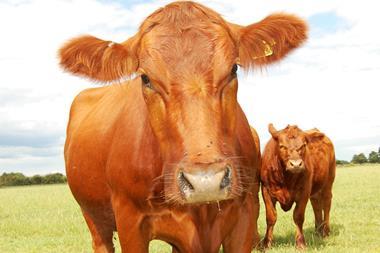
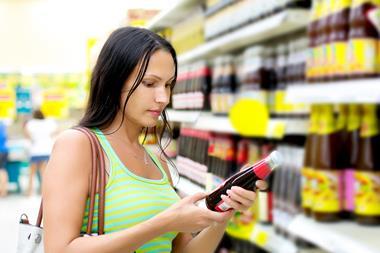
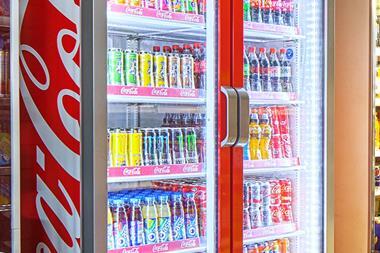
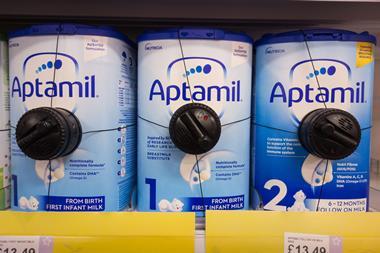
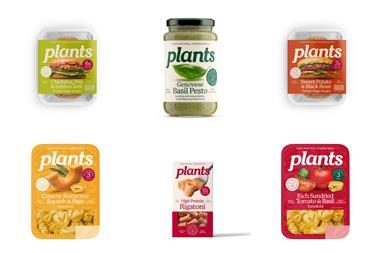
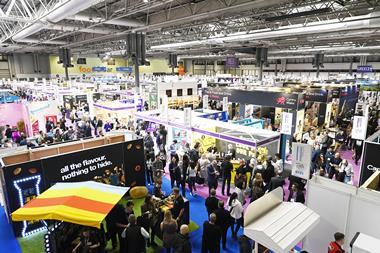
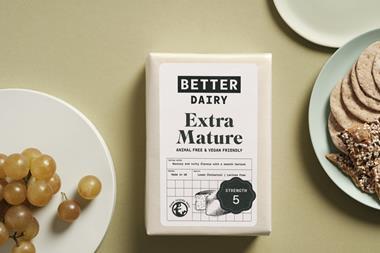


No comments yet